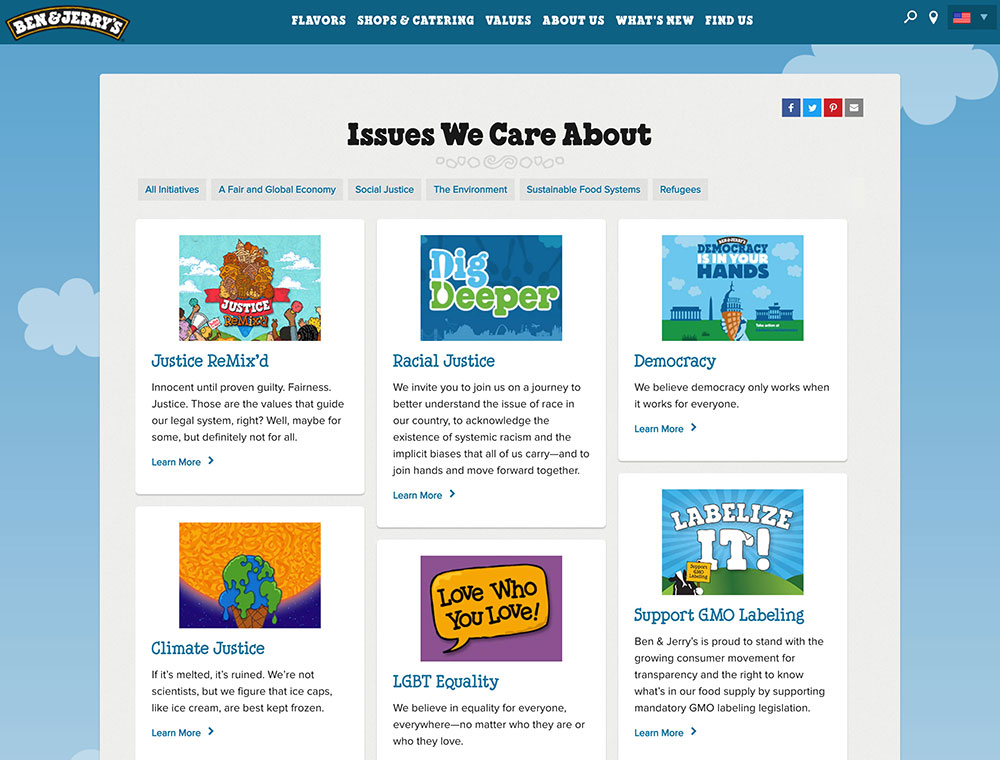
Walmart stopped selling handgun ammunition in response to the mass-shooting epidemic in America.
Ben & Jerry’s devotes a page on its website to “Issues We Care About,” including LGBT equality and racial justice.
Penzy’s Spices spent more than $700,00 on Facebook ads supporting the impeachment of Donald Trump.
Brands taking a public stand on social and political issues, not long ago considered taboo, is now accepted — even expected. More are doing it, and consumers are noticing; 70 percent believe it’s important for brands to have a voice when it comes to social and political issues. Taking a strong position on an issue — and following through with action — can improve your brand perception.
Standing on the sideline, however, also can have an impact, and even affect your bottom line, as two-thirds of consumers are “belief-driven” buyers who are more likely to either buy from a brand they agree with, or not buy from a brand that stays silent.
So if you haven’t spoken up already, the time to consider doing so is now. But tread carefully, because the risk is great in the digital age when a slip-up can draw the ire of a mass audience in the snap of a finger.
Here’s how to do it right:
BE AUTHENTIC
Don’t take a stance on a position simply because it’s the popular thing to do. Above all else, stay true to your brand and your audience, because consumers already have become skeptical of corporate motives. More than half (53%) of respondents to a Social Sprout survey said brands only take a stand to gain a public relations boost, while 35% say they are simply jumping on a bandwagon.

Ben & Jerry's devotes a page on its website to social issues it is involved with
BE RELEVANT
And selective too. Choose issues your brand has a connection to and that directly impact your audience, employees and bottom line. Consumers say brands are most credible when an issue directly affects their customers (47%), employees (40%) and business operations (31%).
THINK LONG-TERM
It can be tempting to quickly jump into an issue that is trending, but think twice. Saying the right thing in the right way takes planning. And saying nothing might be the right move rather than making a knee-jerk reaction or diving into the deep end on an issue your company has never touched before. Be thoughtful and think about how you can integrate your social activism with your internal philanthropy and business plan.
Procter & Gamble's "We See Equal" campaign was created to fight gender bias and promote equality
USE THE RIGHT CHANNELS
Taking a strong stance doesn’t necessarily mean it needs to be done loudly with screaming headlines and huge media buys. Speaking up on social media — 67% of consumers say brands are effective at raising awareness around important public issues when they speak out on these platforms — making donations and partnering with relevant nonprofits can be effective tactics.
BE PREPARED FOR CONSEQUENCES
No matter what stand you take — and not taking a side sometimes counts as a stance — people will react. So be prepared. Proactively plan for how to react to possible backlash. Understand, though, that you’ll never please everyone and that the benefit of taking a stance in the current landscape often outweighs the drawback.